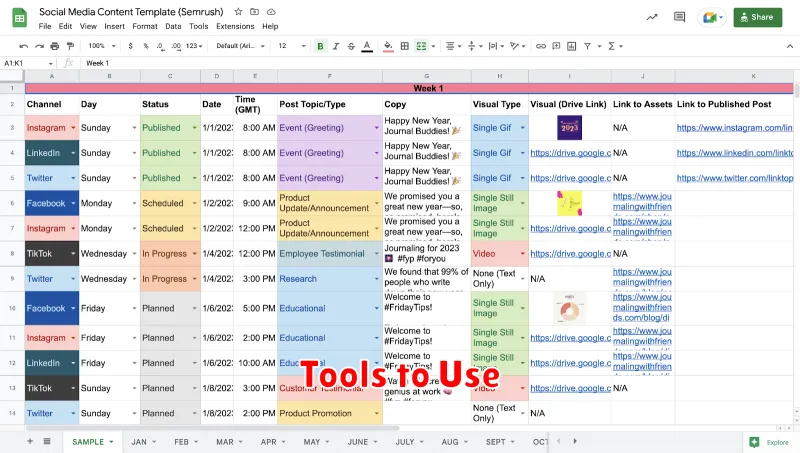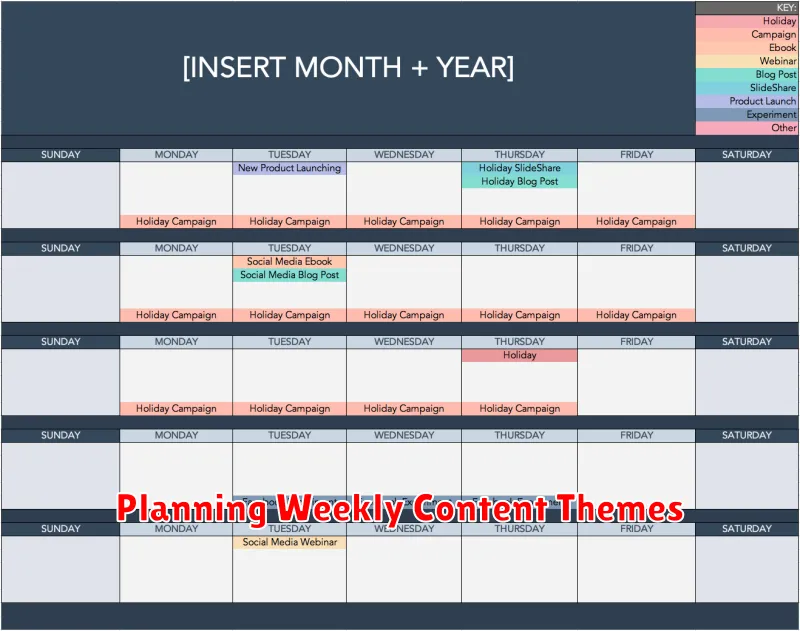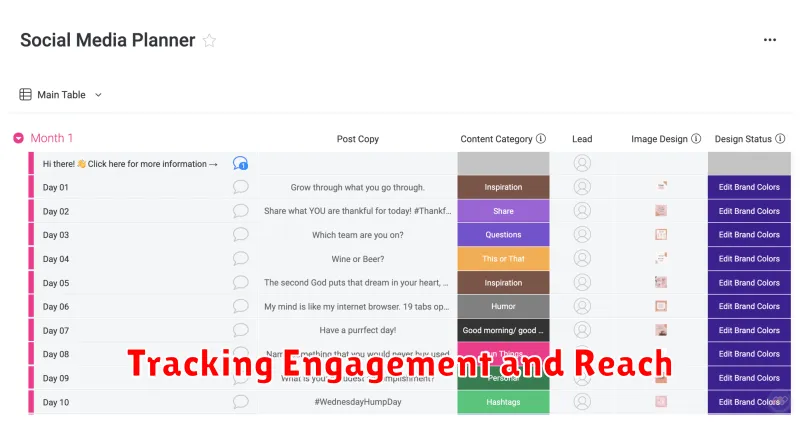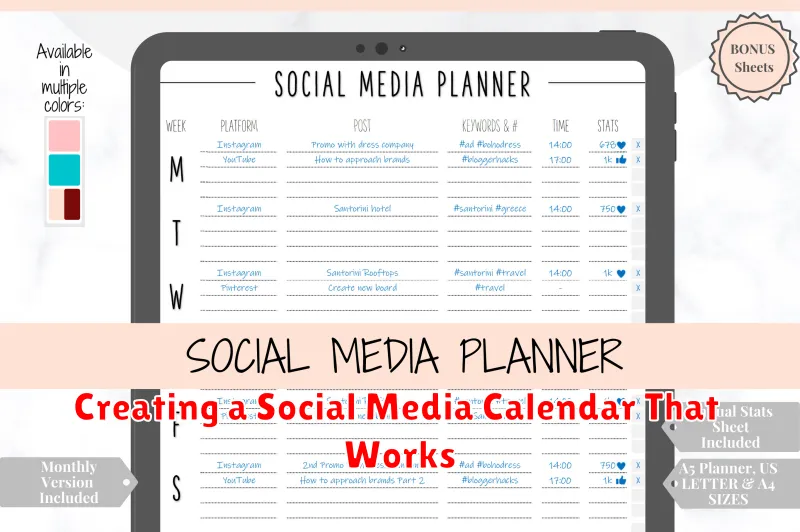In today’s digital landscape, a social media presence is crucial for any business or individual seeking to expand their reach and engage with their target audience. A well-structured social media calendar is the cornerstone of a successful strategy. It provides a roadmap for content creation, scheduling, and publishing, ensuring consistency and maximizing impact across various platforms. Creating a social media calendar that works requires careful planning and consideration of several factors, including your target audience, content pillars, and platform-specific best practices. This article will guide you through the process of developing a social media calendar that streamlines your efforts and drives tangible results. Learn how to effectively manage your social media marketing activities and achieve your desired outcomes.
From defining your social media goals and identifying your target audience to selecting optimal posting times and analyzing performance metrics, this guide offers practical insights into building a social media calendar that works for you. Whether you are a seasoned social media manager or just beginning to navigate the complexities of social media marketing, this article will provide you with the tools and knowledge you need to create a social media calendar that empowers you to connect with your audience, build brand awareness, and ultimately achieve your social media marketing objectives. Discover how a strategically crafted social media calendar can transform your social media presence and drive meaningful engagement.
Why You Need a Calendar
In the fast-paced world of social media, a well-defined calendar is no longer a luxury, but a necessity. It provides the structure needed to manage your social media presence effectively.
A social media calendar helps you organize your content, ensuring a consistent flow of posts across various platforms. This consistency is crucial for maintaining audience engagement and building a strong online presence. Without a calendar, posting becomes haphazard, leading to missed opportunities and a diluted brand message.
Furthermore, a calendar allows you to plan ahead, strategize campaigns, and allocate resources efficiently. You can anticipate key dates, prepare content in advance, and avoid last-minute scrambles. This proactive approach saves valuable time and ensures higher quality content.
Tools to Use

Several tools can assist in creating and managing a social media calendar. Choosing the right one depends on your specific needs and budget.
Spreadsheet Software
For simple calendar management, spreadsheet software like Google Sheets or Microsoft Excel can be effective. These tools allow for basic scheduling, content planning, and tracking key metrics. They are a cost-effective option for individuals or small businesses.
Social Media Management Platforms
Platforms like Hootsuite, Buffer, and Sprout Social offer more advanced features. These include post scheduling across multiple platforms, engagement tracking, and analytics reporting. They often come with a subscription fee but provide valuable time-saving and organizational benefits for managing multiple accounts or complex campaigns.
Specialized Calendar Applications
Some applications are specifically designed for content and social media calendar management. These tools may offer features like collaboration tools, content approval workflows, and integration with other marketing tools. They are best suited for teams or businesses with extensive content marketing strategies.
Planning Weekly Content Themes

Establishing weekly content themes provides structure and consistency to your social media calendar. This helps streamline your content creation process and ensures a balanced mix of topics, appealing to a wider audience and keeping your content fresh.
Consider your overall marketing goals and target audience when choosing your themes. For example, a fitness brand might dedicate Mondays to motivational content, Wednesdays to workout tips, and Fridays to healthy recipe ideas. Consistency is key. Sticking to a schedule helps your audience know what to expect and when.
Here’s a simplified example:
| Day | Theme |
|---|---|
| Monday | Motivation/Inspiration |
| Wednesday | Product Spotlight/Tips & Tricks |
| Friday | User-Generated Content/Community Engagement |
This is just a sample framework. Adapt it to suit your specific business needs and industry. Experiment to find what resonates most with your audience and adjust your themes accordingly. Flexibility is also important. Don’t be afraid to deviate from the plan occasionally for timely or trending topics.
Scheduling and Automation Tips
Efficient scheduling and automation are key to a successful social media calendar. Pre-planning your content allows for consistent posting and frees up time for other tasks.
Utilize scheduling tools to plan posts in advance. This ensures regular engagement with your audience, even during busy periods. Experiment with different posting times to identify optimal reach.
Automation can streamline repetitive tasks like sharing blog posts or reposting evergreen content. However, be mindful not to over-automate. Maintain a balance to ensure genuine interaction with your followers.
Consider these factors when scheduling and automating:
- Target audience: When are they most active?
- Content type: Does it require real-time interaction?
- Platform best practices: Each platform has optimal posting frequencies.
Tracking Engagement and Reach

Tracking engagement and reach is crucial for evaluating the effectiveness of your social media calendar. It helps you understand what’s working, what’s not, and how to improve your strategy.
Key metrics to monitor include:
- Reach: The number of unique users who saw your content.
- Impressions: The total number of times your content was displayed.
- Engagement: Interactions with your content, such as likes, comments, shares, and saves.
- Website Clicks: The number of clicks on links leading to your website.
Regularly analyze these metrics to identify trends and patterns. This data will inform your future content planning and allow you to refine your social media calendar for optimal performance.
Coordinating Across Platforms
Managing social media across multiple platforms requires careful coordination. A cohesive brand presence is crucial for maximizing reach and engagement. This involves aligning content themes, messaging, and posting schedules across different channels.
Consider the unique strengths of each platform. For example, visually driven content performs well on Instagram and Pinterest, while Twitter is best suited for real-time updates and concise messaging. LinkedIn is ideal for professional networking and sharing industry insights.
A social media calendar facilitates this coordination by providing a centralized view of planned content across all platforms. This helps ensure consistency and prevents redundant or conflicting messaging.

